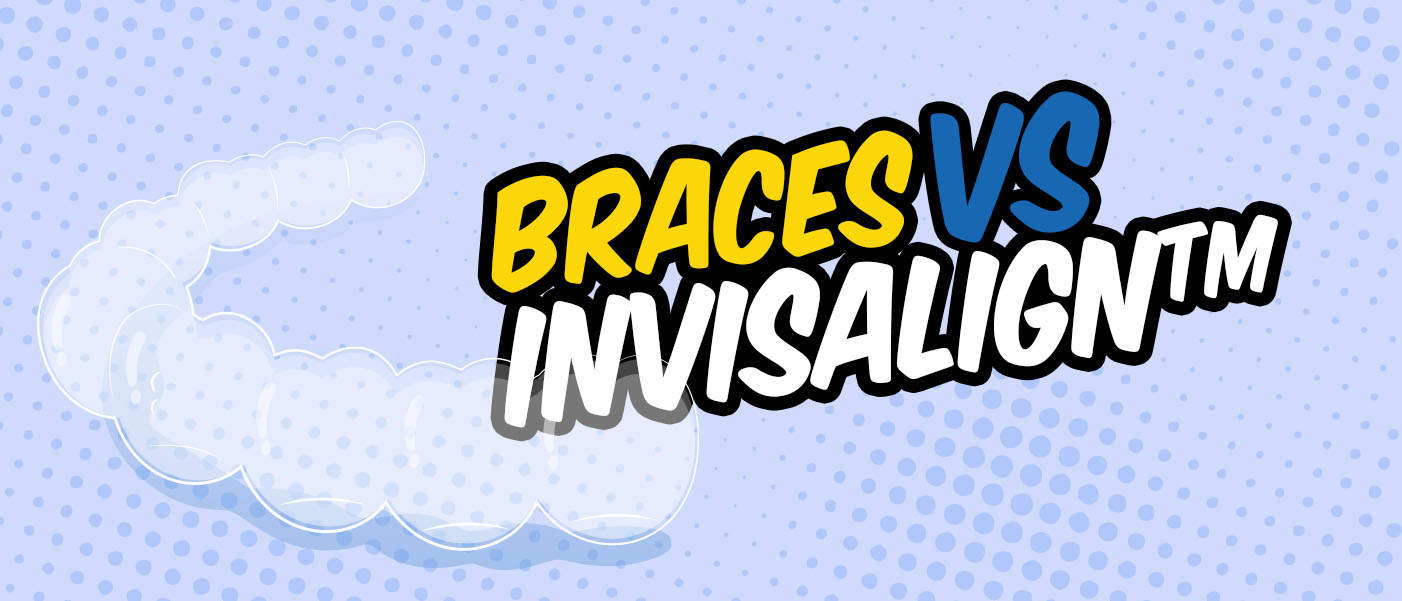Are you looking to get straighter teeth? Typically, there are two main options: traditional braces and Invisalign™. Yet, what’s the difference and why should you consider one option over the other? For starters, let’s start off with the basic definitions:
What are Braces? Traditionally, these are wire-based appliances that are attached to your teeth. They are used to correct crowded and misaligned teeth and cannot be put in or removed without the help of an orthodontist.
What is Invisalign™? These are clear aligners that are transparent, plastic, and used to straighten teeth. They can be put in and removed by the wearer who will receive multiple throughout the teeth straightening process.
Now that you understand what these options are, let’s dig a little deeper.
What’s the Difference Between Braces and Invisalign™?
Traditional Braces
What Do Traditional Braces Correct?
According to Mayo Clinic, traditional braces are best for
- Overcrowded or crooked teeth
- Too much space between teeth
- Upper front teeth that overlap the lower teeth too much — either vertically (overbite) or horizontally (overjet)
- Upper front teeth that bite behind the lower ones (underbite)
- Other jaw misalignment problems that cause an uneven bite
Highlights
- Customizable color options for brackets and rubber bands
- Fixed to your teeth, and you can’t lose them.
- Prevent future jaw weakness and muscle pain that could be caused by misaligned teeth
- Help correct chronic speech problems caused by misaligned teeth
Careful Considerations
- Wearers must avoid hard, sticky, crunchy, and chewy foods
- These aren’t removable without the help of an orthodontist
- You’ll need to brush and floss your teeth frequently to keep teeth, gums, and braces free of plaque and food debris.
- There may be some initial discomfort, but users should feel comfortable with them after a few days.
Invisalign™
What Does Invisalign™ Correct?
According to Invisalign’s own website, these aligners can be used to correct the following conditions
- Overbites
- Underbites
- Crossbites
- Gap teeth
- Open bite
- Crowded teeth
- Mixed baby and permanent teeth
- Generally straighter teeth
Highlights
- Designed to minimize the aligner’s appearance
- Removable for eating
- Less orthodontic appointments (ex. no tightening of your wires every two weeks)
Careful Considerations
- Must be worn for 22 hours per day and as prescribed
- May be lost or damaged as they are removable
- Wearers may feel discomfort after switching to a new set of aligners
- Need to avoid soda, sports drinks, flavored water while aligners are in or else they may get stained.
Ready for Straighter Teeth?
Whether you decide to get traditional braces or Invisalign™, we’re here for you! Make sure to check out our FAQ page to learn more about Burg Orthodontics and our services. If you have any other questions, please make sure to contact a location near you.




